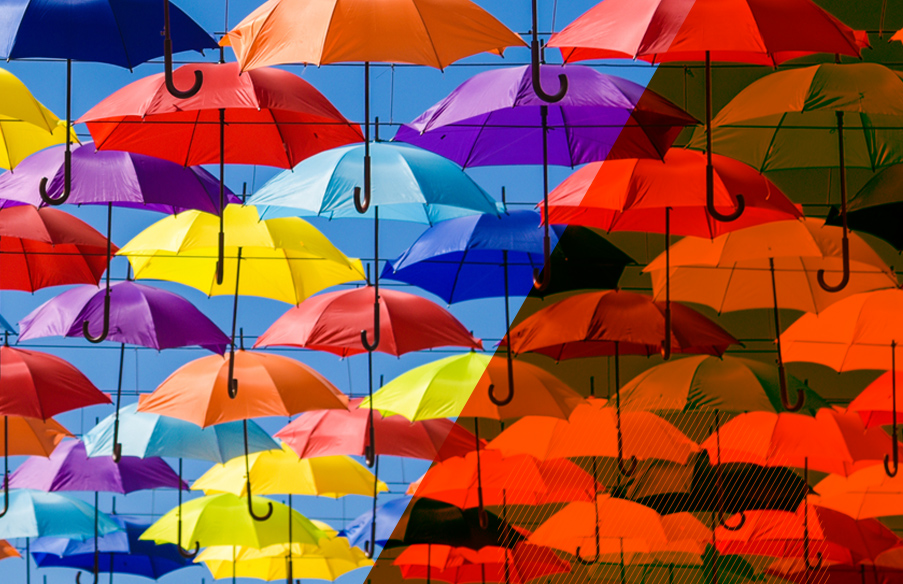Americans Worried Protests Will Trigger Second Wave of Covid-19
No matter where protests have been going on during the pandemic or what the cause is, the vast majority of Americans, 80%, worry these gatherings will trigger a second wave of the coronavirus. The worry over a second wave tips to the mid-80s in the more homogenous Middle Suburbs and Exurbs, according to an American Communities Project analysis of a recent Dynata survey. These suburbs generally have not borne the brunt of the virus to date. Communities also see the risks of any kind of protest differently. Generally, older Middle Suburbs are most concerned about risk while younger College Towns and Military Posts are least concerned.
Most and Least Worried by Community
Among the questions Dynata asked Americans: “How worried are you that the protests which have been happening around the country, including those against coronavirus restrictions or those against mistreatment of minorities such as African Americans, will trigger a second wave of the coronavirus?”
In the Exurbs, 49% answered they are “very worried.” Comparatively, in Big Cities, where some protests over police brutality and racism have swelled to tens of thousands of people in close proximity for multiple days, 43% reported being “very worried.”
While the worry crosses communities, there are places where sizable numbers are unfazed. About 13% of Americans nationwide said they are “not at all” worried. In young and mobile communities (College Towns and Military Posts), 15% said they are “not at all” worried. By and large, young people are considered less susceptible to the virus, and fewer residents in college and military locales have underlying health conditions that put them at greater risk. Moreover, if the young and mobile are not mixing with older residents in their daily activities, they may feel more at ease about the virus.
These favorable health and environmental conditions do not hold in minority centers (African American South, Hispanic Centers, and Native American Lands), where 15% also said they are “not at all” worried. These communities have been hard hit by the virus in part due to residents’ underlying health conditions as well as housing and essential worker challenges, including being in close quarters, unable to socially distance. At the same time, disseminating information about the virus to these communities has been uneven to poor.
On the question of people’s feelings about the protests (of any kind) happening around the country during the pandemic, risk is the main concern. Nationwide, 43% of Americans agreed that “it’s too risky to have large protests during the pandemic.” The figure climbs to a high of 50% in the middle-income, average-educated Middle Suburbs; affluent, well-educated, multicultural Urban Suburbs are next at 44%. It’s worth noting that these places are located in metropolitan media markets, where newscasts show teeming crowds in adjacent Big Cities, with and without face masks, day after day, along with reminders about the dangers of not socially distancing.
In young and mobile communities, the response “too risky” hits a low of 36%.
In minority centers, 18% said “it is definitely worth the risk to have large protests during the pandemic.” The next highest are diverse, stratified Big Cities at 15%. These community types are perhaps most deeply and broadly impacted by the way people of color are treated.
What also surfaces in this question is the general acceptability of large protests. On this point, 9% of Americans said “large protests are never acceptable.” Most community types hover around this marker. In Big Cities, it drops to around 7%, perhaps because such protests are more prevalent — and visible. Whereas, in rural white communities (made up of Aging Farmlands, Evangelical Hubs, Graying America, LDS Enclaves, Rural Middle America, and Working Class Country) 12% said “large protests are never acceptable.” Given that, it’s not hard to see how reestablishing order may be a message that resonates with a slice of America.
Protesting Over Orders
Protesting stay-at-home orders is also unpopular with a wide swath of Americans. Nearly 50% said they disapprove of the protests over orders to stay at home and close non-essential businesses.
The question to survey participants: “You may have seen in the news that some people are protesting orders to stay at home, closing of non-essential businesses and other social distancing efforts. To what degree do you approve or disapprove of these protests?”
The Middle Suburbs had the strongest negative reaction to the protests. In these 77 counties located around the major Northeast and Midwest cities, 56% said they disapprove, with 40% saying they “strongly disapprove.” In the Exurbs, 52% said they disapprove, with 34% saying they “strongly disapprove.”
At the same time, Exurbs have the highest percentage of people who said they approve these protests at 27%. Note that many people in Exurbs reside in areas of lower population density. Social proximity is a key contributor to the spread of the coronavirus. Greater approval follows in diverse Big Cities at 25% and less-virus-impacted young and mobile communities at 22%.
Strong Views About Armed Protests
A majority of Americans disapprove of the armed protests that have taken place over stay-at-home orders. Nationwide, 59% of Americans said they disapprove of the armed protests. Urban Suburbs and young and mobile communities also stand at 59%.The number jumps to 63% in the Middle Suburbs and 64% in the Exurbs.
The question: “In some places heavily armed protesters have gathered in public spaces such as legislative buildings to protest orders to stay at home and enforcement of other social distancing efforts. To what degree do you approve or disapprove of these armed protests?”
Overall, 18% of Americans said they approve of these armed protests. Approval reaches 23% in minority communities, 20% in the Middle Suburbs, and 20% in Big Cities, showing the split views in these communities.
As states have lifted stay-at-home orders while many continue to restrict business, this issue has receded. Time will tell whether Americans’ worries about protests will amount to more Covid-19 cases in the coming weeks.
